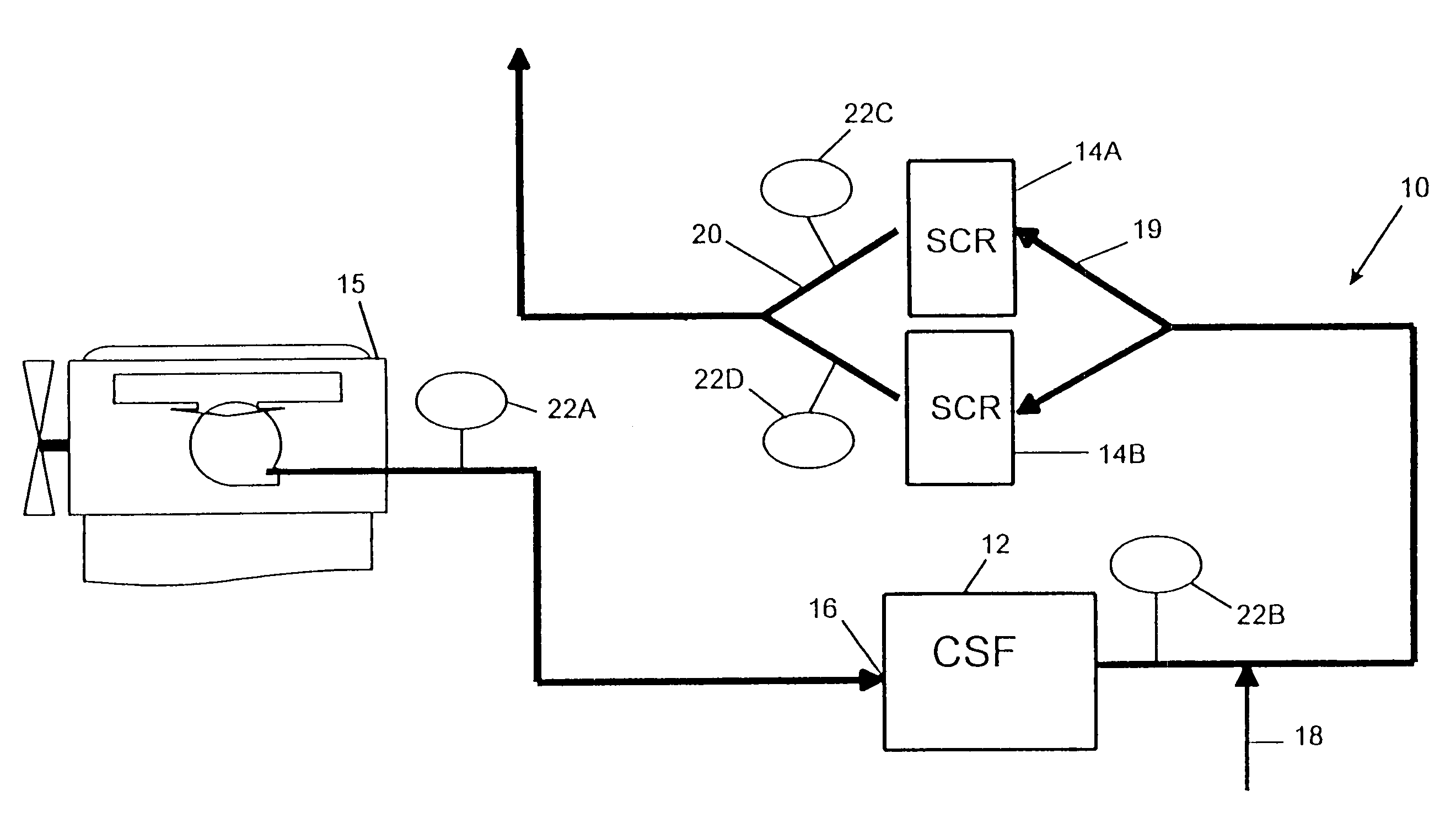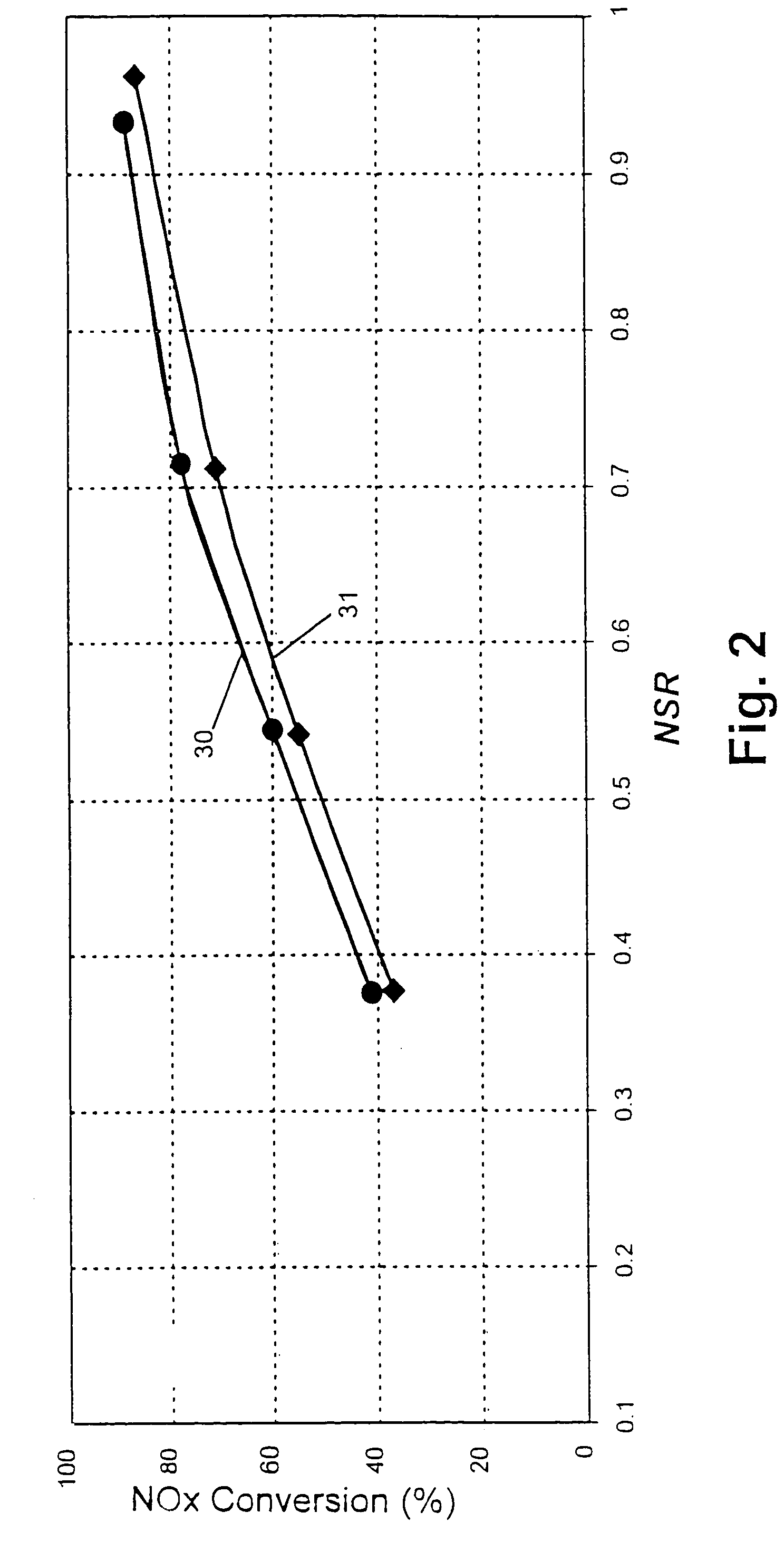Exhaust system for enhanced reduction of nitrogen oxides and particulates from diesel engines
a technology of exhaust system and diesel engine, which is applied in the direction of machines/engines, separation processes, mechanical equipment, etc., can solve the problems of low exhaust temperature (150–250° c.), relatively high emissions of nitrogen oxides (nox) and particulates, and low exhaust temperature. achieve the effect of reducing effectiveness, clear performance advantage, and increasing nsr
- Summary
- Abstract
- Description
- Claims
- Application Information
AI Technical Summary
Benefits of technology
Problems solved by technology
Method used
Image
Examples
Embodiment Construction
[0047]Referring now to the drawings where the showings are for the purpose of illustrating a preferred embodiment of the invention only and not for the purpose of limiting same, there is shown in FIG. 1 a bench test unit 10 which does not represent the commercial embodiment of the invention in its preferred embodiment. (The preferred embodiment is schematically illustrated in FIG. 14A.) The test unit 10 is shown in FIG. 1 because the unanticipated synergy between an up-stream CSF 12 and an SCR catalyst 14 was discovered via engine tests in an engine-dynamometer test cell depicted schematically in FIG. 1.
[0048]The engine 15 was a Model Year 1998 Caterpillar 3126 (7.2 liter) Direct Injected, Turbo-Charged / Intercooled engine rated at 300 HP @ 2200 RPM. For the purposes of the tests the engine was calibrated to produce 4 g / bhp-hr NOx emissions over the U.S. Heavy Duty Transient Test Cycle.
[0049]For the tests the fuel was an ultra-low sulfur (ULS) diesel fuel provided by Phillips Petrole...
PUM
| Property | Measurement | Unit |
|---|---|---|
| exhaust gas operating temperatures | aaaaa | aaaaa |
| temperature | aaaaa | aaaaa |
| exhaust temperatures | aaaaa | aaaaa |
Abstract
Description
Claims
Application Information
 Login to View More
Login to View More - R&D
- Intellectual Property
- Life Sciences
- Materials
- Tech Scout
- Unparalleled Data Quality
- Higher Quality Content
- 60% Fewer Hallucinations
Browse by: Latest US Patents, China's latest patents, Technical Efficacy Thesaurus, Application Domain, Technology Topic, Popular Technical Reports.
© 2025 PatSnap. All rights reserved.Legal|Privacy policy|Modern Slavery Act Transparency Statement|Sitemap|About US| Contact US: help@patsnap.com



